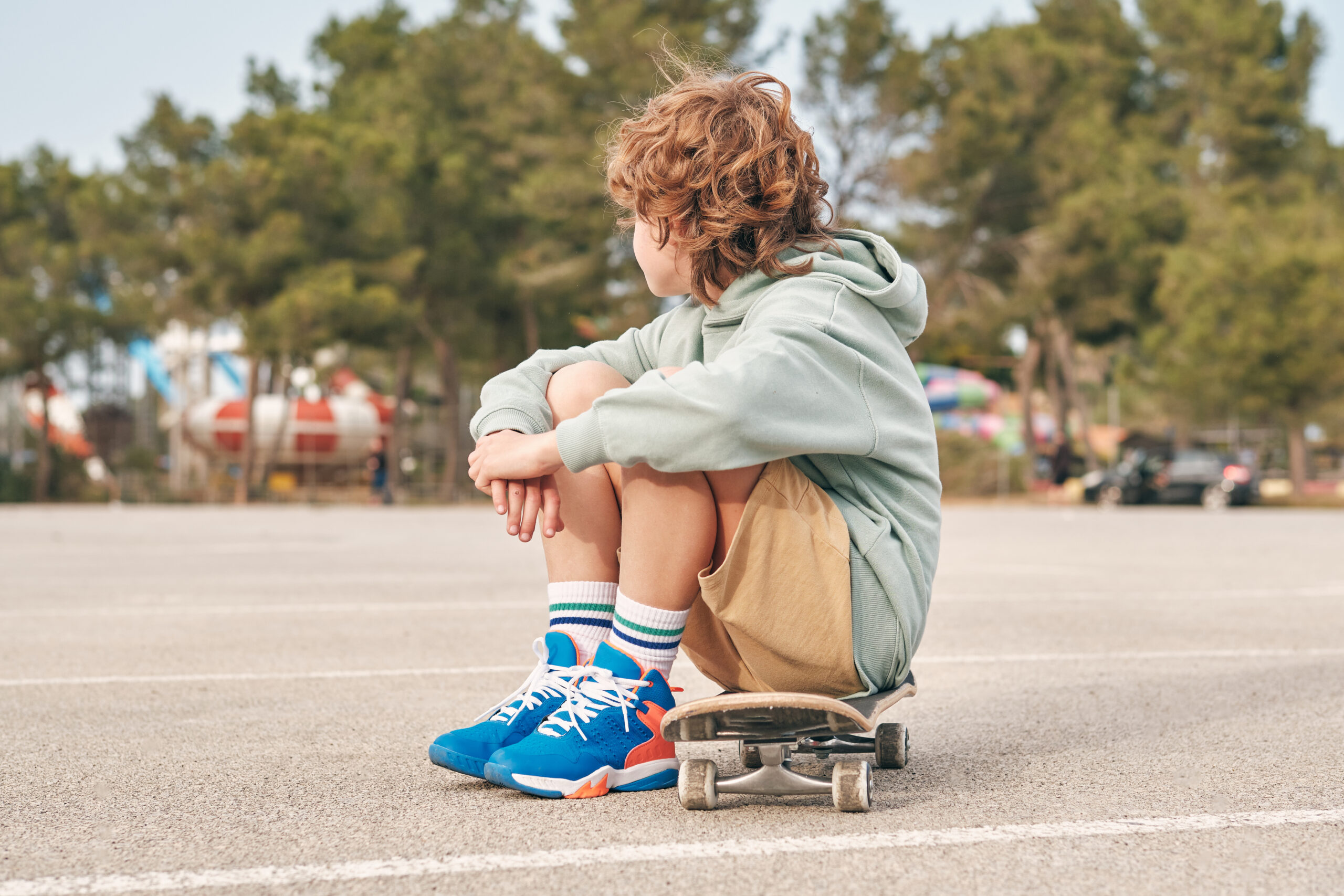The internet is a perplexing mix of kidnapping prevention and escape videos for children. This page compiles the finest of them into a one-stop shop for lifelong, easy yet effective escapes from bullies, rapists, and kidnappers.
Predators thrive on their prey’s ignorance. You’ll learn all of their techniques, as well as how most kidnappers now prowl online to build off-line traps – and how to protect your children both online and in person. You’ll also learn how to assist police in rescuing youngsters who have been kidnapped and sold into human trafficking.
Overall, top professionals teach kidnap prevention, escape, and rescue from beginning to end. There are two additional benefits: as a parent teaching your child, you will learn how to protect yourself as you both acquire lifelong skills together; and you will begin having regular parent/child safety dialogues, which are critical, as you will see below.
Overview
“I do want to advise that we don’t want to fear them to the point where they don’t go outside,” said Bob Lowery of the National Center for Missing and Exploited Children. “In general, the world is safe. However, it is advisable to have open dialogues with youngsters in order to teach them what they may encounter and what to do…” “Our youngsters simply need to be educated…” [emphasis mine] “When visiting areas like amusement parks or crowded malls, take a moment to take a picture of a youngster to know what they are wearing all the way down to their shoes,” she adds. When a child is taken or goes missing, “even discovering a child’s image becomes a major catastrophe,” he says. “Even a basic chore might overwhelm us in moments of terror.”
See also How to Keep Track of Your Child at a Crowded Event and Using a ‘Family Whistle’ to Find Your Child in a Crowd.
“Children got away from offenders in a variety of ways, including ignoring or refusing them, using their cell phones to threaten intervention, fighting, screaming/making noise, child or adult intervention, and, ultimately, the offender or child leaving the area or the child being voluntarily released,” according to MissingKids.org. Screaming/making noise was the only kid behavior that enhanced the likelihood of an offender’s arrest because it raised the likelihood of adult intervention.” [emphasis mine] More information can be found at the Stranger Danger vs. Stranger Safety FAQ.
“All our youngsters need is an education…”
Rebecca Savarese, 12, was walking to school alone in Pittsfield, Massachusetts, on a cold January morning in 1994. A man got out of his pickup vehicle on the side of a busy junction, flashed her a revolver, seized her backpack, and dragged her toward his truck. Despite the weapon, she cleverly pretended to have an asthma attack and fainted, then whirled away, leaving him holding her jacket and backpack as she fled to a nearby snowplow driver for assistance. The would-be kidnapper drove away. Only one of several bystanders spotted the kidnapping attempt and took down the truck’s license plate number, which led to the arrest of Lewis Lent – a terrible serial-killer of children.
While’snatch-and-run’ kidnappings by strangers are uncommon, they occur most frequently when a youngster is alone. Rebecca, on the other hand, had followed her mother’s advice to defy an adult and fight to escape as soon as possible. The chances of survival are significantly better on the spot than in a remote secondary crime scene.
You can tilt the odds in your favor by teaching your children how to flee from a bully, rapist, or kidnapper using role-playing and the video links below. (Once again, these are simple yet effective life skills for both your child and you, the parent.)
Predators still stalk the outdoors nowadays, but the majority increasingly patrol the internet, attracting victims and exploiting them either online or offline (in person). Here are some outdoor and online lures:
Common Lures Are Tested | Kyra Phillips – CNN | video 1m59s | Moms are astonished by their children’s reaction to a producer portraying as a would-be child predator.
Lessons from Predator Test Passers | Raising America with Kyra Phillips – CNN | video 3m52s | They put 20 children through their paces. Thirteen children passed. What prompted them to refuse to accompany an unknown stranger with a gorgeous puppy? They all mentioned important lessons learned from their parents.
What would your child do in this situation? New ways to teach children about strangers | Tram Mai – 12 News KPNX-TV, NBC | video 3m29s | Police believe it is not enough to simply “speak” to youngsters about risk; they need be tested. We put children to the test as parents looked on. (For additional information on common kidnapping lures, see Child Safety – Outdoors.)
Stranger Danger Shocks Kids | Dave Carlin – CBS-2 New York | video 2m47s | As a test, hidden online dates that turned into surprise attacks are harsh lessons for the poor girls, but they convey a valuable lesson to other teens who merely watch and learn.
Bystanders witness a teenage girl meeting up with a stranger she met online who is definitely an online predator. Would you intercede on behalf of the child? |
Megyn Kelly – Today Show – NBC | video 10m36s | How A 17-Year-Old Girl Was Nearly Lured Overseas By Stranger She Met Online An American girl thought she’d found love when she met a stranger online. Instead, she was almost enticed into danger in Kosovo. Fortunately, her father discovered the truth. | 3:05 The FBI suspected human trafficking (for prostitution), citizenship fraud (extortion or kidnapping), and organ harvesting. Internet Safety Tips | Also check Internet Safety for Kids and Parents – FAQ |
“Nothing replaces parental or trusted adult monitoring and attention,” said Nancy McBride, the National Center for Missing and Exploited Children’s head of preventative education. “Obviously, that applies to younger children, but it also applies to older ones.” Furthermore, “when the child’s bond with their parents isn’t solid, their communication breaks down, making the child exposed to internet predators,” McBride explained. See the dangers at the FBI: there could be 1,000 victims in a sextortion case. ConsumerNotice: Internet Safety for Kids has safety suggestions, and How to Keep Kids Safe on YouTube and Internet Streaming has parental control programs.
Men make up 3% of the population. That means one out of every 33 men desires sex with a child. Why should you tempt him with your unaccompanied child? See the dangers of raising Free-Range Children vs. Safe-Range Children.
Stranger Danger Escape Lessons KinderVision Child Safety Tips with Detective Chris McDonough, a police specialist in child safety. | video 9m45s | 0:01 Stranger’s enticements | 1:49 Do not leave a child alone in a car | 2:00 Public restrooms and the “buddy system” | 2:28 Avoid secluded areas | 3:01 Yelling “NO!” and more stranger’s enticements | 4:04 Resisting a stranger | 4:20 Calling 9-1-1 emergency | 4:36 Secret code or password | 5:31 Parent to child: “If I don’t know, you don’t go (anywhere).” | 5:39 Know the names and phone numbers of your child’s playmates | 5:54 6:32 Online safety | 7:29 Answering the doorbell (also read Push-In for more) | See more KinderVision films for kids. See also kidsmartz.
Thrash, struggle, bite, and cry continuously, “Help! Police!” or “NO!” Throw away any snatched jackets or backpacks, dump any extra stuff that is slowing them down, and flee to a busy area. yell, run, and tell! A kidnapper may avoid a public spectacle by fleeing alone. Witnesses may also intervene or at the very least identify the kidnapper and/or vehicle. (Also, see Today – NBC’s How to Protect Kids from Predators and Kidnappers for 40 tips from retired FBI agent Clint Van Zandt.)
How to Avoid Being Kidnapped! – with Jiu Jitsu master and retired cop Steve Kardian | video 5m28s | This applies to both kidnap and rape escape for minors (and adults). Younger children should skip ahead to the ‘Escaping From A Wrist-Grab’ portion. | 2:51 Kicking from the Ground (these Defensive-Ground-Kicks are also shown below in the Tracie Arlington video for younger kids). | 3:51 Breakaway Front Pickup | 4:30 Breakaway Rear Pickup
If a kidnapper threatens a child with a weapon, simply ignore it and flee while crying “Help! Police!” or “NO!” A weapon is used to frighten rather than harm a child. That would completely derail his intentions for a healthy victim. Furthermore, serial killer Lewis Lent (described above) used a handgun to intimidate Rebecca (although he wouldn’t dare to fire it, especially in public). Again, the chances of survival are significantly better on the spot rather than a lengthy capture at a remote secondary crime site.
A quick-thinking child may avoid a kidnapper by racing in a circle around a tree or a huge object, such as a parked car, as in the children’s game “tag” (or “chasey”) while crying “Help! Police!” or “NO!” Then, while rushing toward a populated place, continue yelling.
Set off their personal security alert (noisemaker or screamer) and flee to a populated place. Most kidnappers will not pursue a loud target. [Warning: use with extreme parental discretion, monitoring, and care.]
NBC – The Meredith Vieira Show with Jiu Jitsu expert and retired police officer Steve Kardian | video 3m49s | This applies to both kidnap and rape escape for minors (and adults). Younger children should skip ahead to the ‘Escaping From A Wrist-Grab’ portion. | 0:47 Wrist-Grab/Defensive Ground-Kicks | 1:16 Choke-Hold Escape | 1:46 Pinned-Down Escape
Also see Fighting Strategies’ Clinch Attacks, Rape Escape Options – Ultimate, and Self Defense Techniques For Women – Ultimate (all three pages also apply to teens).
Getting Free from a Wrist-Grab (this is for kids, teens, and adults)
The terrifying security camera footage from Evie’s Car Wash in Sarasota, FL, shows 11-year-old Carlie Brucia being dragged to her death by Joseph P. Smith in 2004 – the first time the world watched a monster snatching a child – yanking her by her wrist out of sight. She scarcely fought back.
A Personal Security Alarm (noisemaker or screamer) could have prevented her assailant and/or summoned help. [Warning: use with extreme parental discretion, monitoring, and care.] Or she could have escaped if she had learned how to just ‘break free’ from a wrist-hold (a frequent ‘catch grab’), as demonstrated in the following videos:
World Jujitsu Champion Anthony Britton’s Wrist Grab Release | video 1m32s | (By the way, a “Release” is also known as a “Breakaway.”) | 0:11 Release Wrist Grab (his right hand grips her left wrist). His grip is weakest where his thumb meets his fingertips. | 0:40 She bends her elbow and turns her wrist toward his weak point, releasing his grip. | 0:55 She punches him and runs away. | 0:59 | 1:08 Cross-Grab Release (his right hand grips her right wrist). As she punches him and flees, she turns her wrist toward his weak point while bending her elbow, freeing his grip. | After a few tries, this becomes quite straightforward and effective. Grab your right wrist with your left hand to learn/feel how it works. Notice how your grip has four fingers on one side of your right wrist and only one thumb on the other. The weak spot of your grasp (also known as the “hole”) is where your fingertips meet the tip of your thumb. To ‘break-away’ from your left-handed hold, simply rotate your right wrist while bending your right elbow to go through the “hole” in your grip. The same breakaway works when someone else grabs your wrist, as demonstrated in the video.]
0:24 Wrist-Grab Breakaway (both wrists – “L&7”) and Knee-Strike | 1:01 Wrist-Grab Breakaway (both wrists – “L&7”) and Knee-Strike | 1:01 Wrist-Grab Breakaway (both wrists – “L&7”) and Knee-Strike | 1:01 Wrist-Grab Breakaway (both wrists – “L&7”) and Knee
The following video demonstrates a basic Wrist-Grab Breakaway (“going through the hole”). As you’ll see, it happens automatically when the youngster intentionally drops down to sit on the ground (to utilize Defensive-Ground-Kicks):
Tracie Arlington on Dr. Phil demonstrates self-defense tips for children | video 2m46s | 0:15 “Temper Tantrum Attitude” (an effective mindset) | 0:26 Defensive-Ground-Kicks (Sit on your buttocks and kick the attacker’s knees, bracing yourself with your hands on the ground behind you and swiveling around on your buttocks as needed. Kick his knees with the sole of your heel (the most vulnerable targets on his legs). If he grips your ankle, use your other foot to kick his hand away. If he tries to kick you, block his kick with your kick and/or kick the knee of his supporting leg. Defensive-Ground-Kicks are THE most effective defensive position for children, teenagers, and adults.) | 1:08 Rear-Pickup/Bite Breakaway |
It’s worth noting that there’s an ancient disagreement among safety teachers over which ‘distress signal’ children should yell when attacked. Their opposing viewpoints frequently perplex parents. Finally, let us clarify the issues:
The helpful video above is by a fantastic teacher who teaches a common distress signal for children: yell frequently, “Stranger Danger! 9-1-1!” if they are attacked. However, some professors disagree because those seven syllables are difficult to recall and accurately enunciate amid the initial shock of a surprise attack by a stranger. The film depicts the girls’ frequently garbled cries, despite the fact that they were adequately prepared in a safe TV studio with a caring teacher. And when do children outgrow that embarrassing yell? Their adolescence? Adulthood? What happens next?
The solution is to keep it simple! All SOS Distress Signals must be straightforward and unambiguous. Of course, the most obvious and straightforward is a scream! Some teachers, however, argue that a scream (or crying “NO!” or “HELP!”) may sound like a child is simply playing (or disrespecting a parent), and a bystander may dismiss it. So, with the best of intentions, parents devise various distress signals like “You’re not my Daddy!” and other variations that are difficult to recall and correctly speak in the shock of a sudden attack. They would also not apply to bullying, groping, or other assaults by other children. That is not keeping things simple.
Instead, for all ages and offences, a common choice that is more clear, straightforward, and brief is to constantly cry “Help! Police!” – which is effective and only has three syllables to know and speak. Or, even easier, cry “NO!” repeatedly – an evident distress signal from anyone, especially a toddler who is opposing an adult (or any aggressor). Overall, the plainly defiant “NO!” is only one word, is easily recalled and uttered, applies to all assaults – and is more powerful and empowering for escaping.
[A witness who intervenes may rapidly determine whether an adult (or any aggressor) is the child’s guardian or a kidnapper. That could prompt a true kidnapper to run – alone – or assist the witness in identifying him for the police.]
Furthermore, many of the visitors to this page will be unable to dial 9-1-1. (from all over the globe). And it might not work for someone visiting a foreign country. This is because the majority of the world’s 193 countries do not utilize ‘9-1-1’ as their emergency phone number. Furthermore, everyone knows their local emergency number; they don’t need a reminder; it’s just unnecessary clutter in a crisis. Always keep it simple.
Of course, you are free to use whichever distress signal you want. However, do not use the absurd “Fire!” as a distress signal for a crime! The Kitty Genovese Syndrome debunks that erroneous counsel.
Nonetheless, aside from the “distress signal dispute” (which clarifies the issues), the video above is a gem. The ‘Temper Tantrum Attitude’ is an appropriate mindset for younger children. (Adults, teens, and older children should read The Optimal Mindset for Saving Your Life and Acting – Role Playing for Real.) And the Defensive-Ground-Kicks are a strong defense that is quick and simple to practice with your youngsters.
The films above are only a few minutes long, but they are really useful. Practice them at least once a day until your youngster reacts automatically and without prodding (after maybe 5-10 days). Then, on occasion, conduct a refresher session. [You can also take them to radKIDS for self-defense and kid safety advice] (see the details at the end of this page). Following that, kids may wish to join in a martial arts program. [See also Choosing a Self-Defense Course]
If the Child Is Already in the Kidnapper’s Car (this is for kids, teens, and adults) The goal is to stop the kidnapper from taking the child to a remote area as quickly as possible. The kidnapper’s ability to drive must be disrupted, and the automobile must crash while going at a very slow speed. This will draw the attention of observers and allow the child to flee. As an example:
Louisiana young girls forced into car wreck to escape kidnapper | A gunman pulled two girls, ages 14 and 15, into his car and drove away, sparking a scuffle. The youngsters continued to grasp the steering wheel, leading the automobile to crash a few miles away. “We did struggle for a bit over the wheel, and I eventually prevailed and jerked it,” the 14-year-old girl explained. “In the process, we hit two cars, and my friend and I walked out, fleeing for aid, and these two guys tackled the kidnapper.”
CAUTION: The child or others may be injured as a result of these child safety recommendations and escape strategies. All responsibility must be assumed by the parents, who must decide whether the benefit outweighs the risk. Practice these actions carefully in a parked vehicle with the engine switched off, and slowly act out (while describing) the following:
If she’s in the front passenger seat, she can shove herself between the driver and the steering wheel – clinging on with all her strength while blaring the horn – before he even starts driving her away. Do this as quickly as feasible, or whenever she has the opportunity. (Practice this while pretending to sound the horn to avoid frightening your neighbors.) See how your children can avoid being abducted in a car.
“Help! Police!” yell everytime a window or door is opened. (Practice with phony, low-volume yells to avoid scaring your neighbors.)
Grab the steering wheel with all her strength as he’s in the middle of a slow turn. (Practice with the engine turned off and the driver pretending to turn the wheel.)
Brace her back against the door and use the powerful Defensive-Ground-Kicks demonstrated in the Tracie Arlington video above to assault the kidnapper (and in Fighting Strategies). He won’t be able to drive while sustaining such a barrage of kicks. (Of course, practice with false, slow-motion kicks.)
If she is a backseat passenger, she may still be able to attack the driver by clawing at his eyes from behind. Cause the car to crash at a very slow speed!
Unlock the door and get out anytime the automobile is stationary. 2 young children flee an alleged kidnapper | video 2m28s | A grandmother got out of her car to drop off a package, leaving the engine running with her grandchildren in the backseat. When a predator sensed an opportunity, he leapt into the driver’s seat and began driving away. The youngsters, ages 8 and 10, fearlessly jumped out of the (slowly moving) automobile as their grandmother chased them down the other side. The kidnapper/carjacker had grabbed the girl’s hoodie, but her brave brother pushed her away from him and out of the car as they fled together. The kidnapper took the car but not the children.
Using A Required Safety Feature To Escape From A Locked Trunk | Today – NBC with Jeff Rossen | video 5m43s | The courageous escape of an abducted nursing student from the trunk of a (slowly) moving car highlighted a safety feature that many people are unaware of. | 0:50 Finding the Trunk-Latch Release (in cars since 2001) | 3:52 Special Forces officer Michael Hawk demonstrates how to break free from hand restraints (zip ties) |
Dateline – NBC News with Andrea Canning | video 5m35s | 0:13 Escaping Front Duct-Tape Wrist-Binding | 0:34 Former CIA Officer Jason Hanson | 0:48 Escaping Rear Duct-Tape Wrist-Binding | 1:43 Escaping Front Rope Wrist-Binding | 2:26 Escaping Front Rope Wrist-Bind Locked in a car trunk – Trunk-Latch Release | 3:11 A second car trunk escape – Seat-Back Release | 3:28 Kid test | 4:08 How to break a (side) car window from the inside – kick out a low corner of the glass (the entire window will shatter) |
See Survival Options -SOS for more information on silent SOS signals (at the end of that page).
Children Who Overcame Kidnapping
Jeannette Tamayo, a 9-year-old girl from San Jose, California, was walking home alone from school in 2003 when David Montiel Cruz followed her into her house (the slang term for that is “tailgating”). He thrashed her mother and sibling before fleeing in handcuffs with Tamayo. Over the period of two days, he began raping her and threatening to kill her. When he mentioned killing her on his smartphone, she panicked and thought, “Oh, my God! I must find a way out.” She claimed she had asthma and would die if not treated. Is it feasible that he sympathized with her? Or had he already been frightened by the significant media coverage and an Amber Alert? In any case, he dropped her off “unharmed.” She assisted authorities in locating him by memorizing his cellphone number – impressive for a 9-year-old in a life-or-death situation.
Read 15 Haunting Stories From Children Who Survived Kidnapping to learn how they persevered.
A YouTube search for “sex trafficking survivor” yields hundreds of videos of abducted people who were rescued or escaped on their own.
Inside Edition – CBS | video 2m6s | Watch This 8-Year-Old Sister Save Her Baby Brother From Kidnapping In a terrible security camera footage, a stranger runs with a 22-month-old baby in his arms, pursued by a screaming small girl. (Not long later, the kidnapper dropped the unhurt baby on the ground and fled.)
How can someone possibly consider stealing a baby? And then follow through?
Kidnapped Children Forced Into Sexual Slavery
Kidnappers, traffickers, and pimps kidnap and sell children for prostitution, from infants to teenagers. They also make a lot of money from their twisted clients. Adults are also captured and sold for enslaved sex and/or work.
Human trafficking is a nice term for the capture, captivity, and enslavement of innocent people. The term “Modern Slavery” is more accurate. It’s a modern-day version of ancient slavery made possible by technology. Here’s how human trafficking works, as well as how you might recognize it and assist authorities in rescuing a victim from a horrific existence.
Fact versus Fiction
Factual child sex slavery is significantly less fantastical than the enormously exaggerated, fictional current urban myths, yet it affects millions of victims in 155 countries and tens of thousands of victims in each of the 50 United States.
(Because human trafficking is a secret crime, and victims rarely call the police to report it, even top officials struggle to find trustworthy numbers. As a result, the statistical estimations differ among specialists.)
Jeffrey Epstein was the most infamous villain in American history. Epstein’s associate, Jean Luc Brunel, is France’s villain. Peter Nygard, the fashion mogul from Canada, is the villain. Peter Scully is Australia’s most heinous villain. Nonetheless, despite millions of victims trafficked for sex or work year after year, the worldwide, multibillion-dollar Modern Slavery industry receives little exposure in the major news media. Here are the details:
“Human trafficking cases have been documented in all 50 states and the District of Columbia,” according to the United States Department of State’s 2020 Trafficking in Persons Report. The last paragraph of that page contains many beautiful details.
“Global Human Trafficking” refers to the buying, selling, and forcing of persons into slave labor and/or sexual exploitation. According to the United Nations, four million people are forced to labor in slavery in their own nation or around the world each year.
United Nations – Office of Drugs and Crime – Global Report on Person Trafficking – “Although trafficking in 155 nations appears to indicate people travelling across continents, the majority of exploitation occurs close to home.”
Human Trafficking – IOSI GLOBAL – According to the International Labour Organization, 40.3 million people are today victims of human trafficking worldwide. Today, more slaves exist than at any other time in history. Despite the numbers and their significance, the general public knows little about human trafficking, and the little that has been done to prevent it has been ineffective.” [However, according to the United States Department of State: About Human Trafficking, there are “…an estimated 24.9 million victims globally at any given moment…” and “it is difficult to find trustworthy figures relating to human trafficking.” ]
Human trafficking – Interpol [Interpol is a global police organization that serves all 195 countries.] “Human trafficking is a multibillion-dollar form of international organized crime that resembles modern-day slavery. It is the sale of human beings, particularly women and children, for forced labor, sexual slavery, or prostitution. This includes providing a spouse in the context of forced marriage, as well as the extraction of organs or tissues, including for surrogacy and ova removal – and does not always require the person to be moved from one location to another.”
Victims of Human Trafficking/Modern Slavery Are Trapped
The majority of human trafficking occurs when a person is recruited for a desirable job, whether nearby or far away, but instead becomes trapped in modern slavery – either for labor or for sex. It’s a “bait-and-switch” scheme that leaves them vulnerable to traffickers. Read She believed that a job was waiting for her in Europe. Then she ran into her trafficker.
Online social networks are used by traffickers to form false friendships and advertise false job opportunities. Off-line (in-person) recruitment occurs in schools, shopping centers, parks, bus and train stations, and on the streets. They could also be family members of people the victim believes are their friends.
Recruiters, kidnappers, traffickers, and pimps all play similar roles. One “facilitator,” whether male or female, teenager or adult, may play any of the four roles at any time – and they usually work in groups – as in the case of the Texas family charged in an alleged sex trafficking ring at a Houston bar.
A typical victim profile is a 12- to 14-year-old girl who is desperate to escape her unhappy life – or who has already fled from home. A trafficker looking for vulnerable children may tell her she is beautiful, promise her a job in modeling, television, film, or dance, groom her with gifts, and/or pose as a boyfriend (a.k.a. a “Romeo Pimp”). She willingly agrees to travel to another neighborhood, city, state, or country because she trusts a con artist. Then there’s the SURPRISE! She is brainwashed into submission and sold as a prostitute in a brothel, where her self-esteem plummets, she becomes drug-addicted, she is frequently beaten, and she is raped multiple times per day. To learn why this is the worst form of slavery in the twenty-first century, read Man Sex Trafficked Eight Women.
Intervening on behalf of already kidnapped/brainwashed victims may be too dangerous (and their pimp might react violently). Instead, observe casually and call the police quietly. A Method for Detecting, Reporting, and Preventing Sex Trafficking (and not worry about a false alarm). More contact information is also provided below.
More Indicators of Human Trafficking
* Living with the employer; * Deplorable living conditions.
* A large number of people in a small space.
* Inability to communicate with a single individual.
* Responses that appear scripted and rehearsed, or have inconsistencies in their story.
* The employer is in possession of identification documents.
* Physical abuse indicators.
* Fearful or submissive.
* Unpaid or very poorly compensated.
* Under the age of 18 and engaged in prostitution.
* Indicators of psychological abuse
* Is the individual being controlled?
* Does the person lack food, water, sleep, medical care, or other necessities?
* Is the person allowed to be in public alone?
* Can the person freely contact friends or family?
* Does a minor appear to be in a relationship with a much older person?
* Does the person fear his or her employer?
* Can the person leave their job situation if they want?
* Has someone threatened the person’s family?
Recognize Warning Signs and Ways to Prevent Human Trafficking
Michigan’s Attorney General shows the top three venues in the U.S. for labor trafficking are domestic work, traveling sales crews, and restaurants/food service. The top three venues for sex trafficking include illicit massage/spa businesses, residence-based commercial sex, and hotel/motel-based commercial sex. See why victims rarely self-report and other surprising details at Think human trafficking happens somewhere else? Think again.
Who Do You Tell?
See the National Human Trafficking Hotline website, and/or call their U.S. 24-hour, toll-free, multilingual hotline at 888-3737-888. Also call your local and state police (and the Rescue Groups linked below) if you notice anything suspicious in your neighborhood, along highways, at truck stops, at bus, train, or boat stations, or anywhere. And keep a close watch on the kids of your family, friends, and neighbors who may fall prey – especially if they’re too-free Free-Range Kids
More RESCUE GROUPS
► In the U.S., contact The National Center for Missing and Exploited Children (NCMEC) (NCMEC). Their 24-hour hotline is 800-THE-LOST (800-843-5678). (800-843-5678).
► Global Modern Slavery Directory (2,500+ organizations)
Personal Safety Devices & Resources\s► GPS Child Locator: a child tracking device. Caution: to be used with the utmost parental discretion, supervision, and attention.
► Personal Security Alarm: (noisemaker or screamer) (noisemaker or screamer). Caution: to be used with the utmost parental discretion, supervision, and attention.
► radKIDS.org in-person classes superbly cover child safety tips for self-defense (from bullies, molesters, kidnappers) as well as all-around child safety tips for ages 5-12 (for fires, getting lost, and much more) (for fires, getting lost, and much more).
► Child Molester’s Signs of Abuse and Safeguarding Children from Molesters
► See the four main dangers of raising Free-Range Kids vs Safe-Range Kids: P.A.D.D. – predators, accidents, delinquency, and drugs.
► Netsmartz
► Kidsmartz
► Book warns children and parents about human trafficking dangers
FOR ADULTS
► Survival Options: How to Prevent Kidnapping \s► Survival Options: Kidnapping Survival & Escape
WRAP UP
Now you have the only all-in-one guide to kidnapping prevention and rape escape for kids, teens, and adults – simple yet effective lifelong skills. And now you can also help the police rescue victims of human trafficking.





























